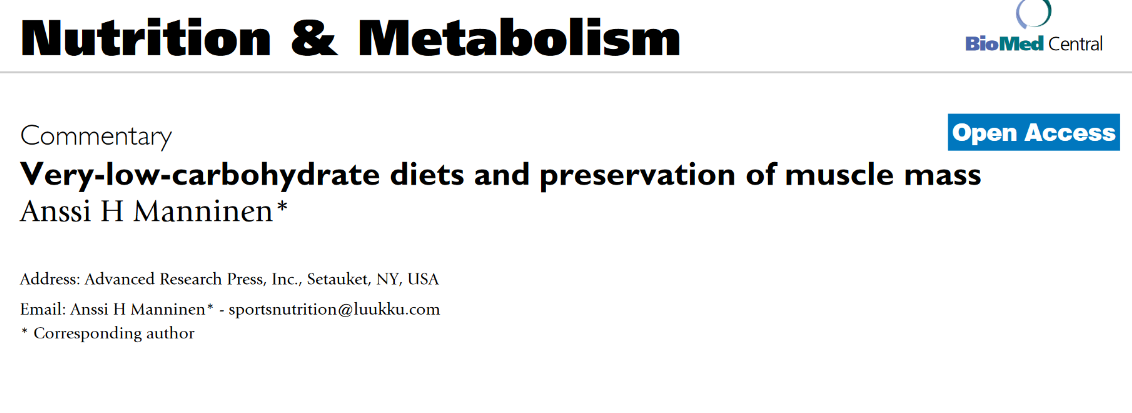It is frequently claimed that a VLCARB sets the stage for a significant loss of muscle mass as the body recruits amino acids from muscle protein to maintain blood glucose via gluconeogenesis. It is true that animals share the metabolic deficiency of the total (or almost total) inability to convert fatty acids to glucose [18]. Thus, the primary source for a substrate for gluconeogenesis is amino acid, with some help from glycerol from fat tissue triglycerides. However, when the rate of mobilization of fatty acids from fat tissue is accelerated, as, for example, during a VLCARB, the liver produces ketone bodies. The liver cannot utilize ketone bodies and thus, they flow from the liver to extra-hepatic tissues (e.g., brain, muscle) for use as a fuel. Simply stated, ketone body metabolism by the brain displaces glucose utilization and thus spares muscle mass. In other words, the brain derives energy from storage fat during a VLCARB.

This is a dated commentary but it does cover the mechanistic possibilities of muscle retention on a ketogenic diet. Interesting read